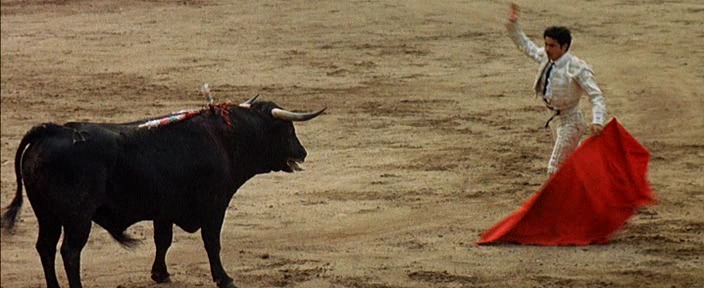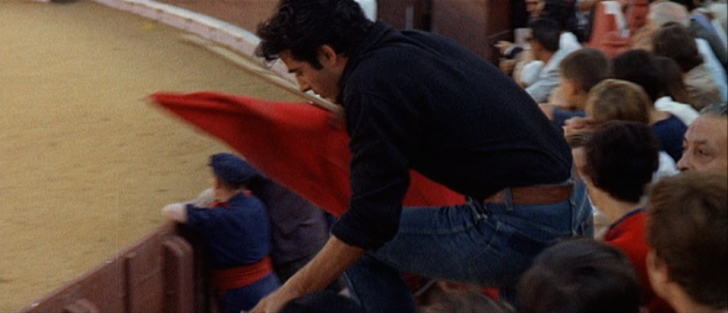Today, we are enveloped in visual media, obsessed, even, with instantaneous image-making. An artist interested in producing a digital or analogue image has access to a host of immediate technologies. The “selfie” and the five-second Vine productions are but a few examples in this rapidly growing milieu a perhaps inevitable evolution to follow from the invention of the camera. Our relationship to the technology has been transformed; the evolving capacity of the camera at once allows for ever-greater possibilities, while also altering our awareness of its metaphysical import. As Roland Barthes stated in Camera Lucida: “I am the reference of every photograph, and this is what generates my astonishment in addressing myself to the fundamental question: why is it that I am alive here and now?” Though we have not completely forgotten, perhaps we have pushed aside the notion that to film is always to document—and to document is to excavate time and place. Directing a lens ultimately underscores one simple, subtle assumption: This Happened.

In 1965, an Italian film directed by Francesco Rosi entitled Il momento della verità (The Moment of Truth) was released. The story, written for the screen by Rosi, Pedro Beltrán, Ricardo Muñoz Suay, and Pere Portabella, tells of aspiring toreador Miguel Mateo “Miguelín” who travels from a small agrarian town outside Jaén, Spain to bullfight. Acclaimed for films such as Salvatore Guiliano (1961) and Hands Over The City (1963), Rosi abides by a particular ethics born from the ashes of post-WWII Italian neo-realist trends and depicts the brutal, unbridled dances between bull and man alongside sequences of quotidian existence in the Andalusian countryside. Yet, there is something to Rosi’s direction—guided by Pasqualino De Santis’ cinematography—that clearly extends beyond reportage or cinematic narration. As the film becomes a semi-biographical account of Miguel’s life, in which he performs as himself, Rosi fuses documentary sensibility with fiction in order to focus attention on the implications of film recording. Specific and seemingly-objective—influenced, perhaps, by Margaret Mead or Jean Rouch—Rosi has created a piece that, fifty years later, resists categorization in the way it persistently compels us to rethink the role of a camera in recreating an event.
Though the film follows a traditional narrative, tracing Miguel’s path from agrarian roots to unfamiliar territories as he propels himself to an ego-stoking position of wealth, Rosi examines his own stance as an outsider traversing different spaces. Peter Matthews, a senior lecturer at University of Arts, London, writes the film “offers a sharp internal critique of its own aestheticizing processes.” Rosi refuses to romanticize bullfighting and efface its cultural history through filmmaking. Rather, he and editor Mario Serandrei purposefully isolate the film’s subjects—man and bull—decontextualizing them through the use of close-ups that highlight hands, horns, and crimson-colored hooves. Within ten minutes—before we are even acquainted with Miguel—we witness the slaughter of a bull by an unidentified matador. A small knife is pushed through the top of the bull’s neck just behind the head, and after it collapses, we see a man bleed the beast from its throat. This graphic ceremony is repeated throughout the film, with Miguel standing in for the murderer with the sharpened muleta, his pride lifting with each kill. As he wends his way through rural and urban arenas with his manager Don José and the bullfights are filmed with mobile cameras, the cultural tradition is transformed into a nauseating collage of unadulterated agony that escapes exoticization.

In reiterating Miguel’s ballets without censure, Rosi leads us to several scenarios that deceptively hint at what the “moment of truth” could be, only to claim a much more profound existential interpretation. When Miguel practices the strike of the sword on a bull-head dummy at Pedrucho’s school for aspiring matadors, “the moment” is when one proves oneself as a master, effortlessly bringing the bull down. Later, when he visits an outfitter, the “moment” is a discussion of dress, perhaps suggesting that the desired truth is only obtained in the profession’s dignified attire, sensationalized stardom, and hyped entertainment. Only after a radical shift in setting—as Miguel returns to the bustle of Madrid from a visit to his parents’ home in the countryside—do we appreciate the true significance of “the moment,” and feel for ourselves Miguel’s uncertainty about his chosen profession. He enters an empty arena, and we see his tiny figure pacing in the center from a bird’s-eye perspective. Miguel’s silence as he looks at the vacant stadium seating permeates the final inquiry he puts to his manager Don José moments later: “What is it all for?” Making a living; living in fear of death. An unexpected reply to this question slowly surfaces during the film’s last bullfight. Where we have previously been shown Miguel plunging the small sword between the bulls’ shoulders, here we are finally shown a blurred bull in the background and Miguel in the foreground, turned away from the camera such that his shoulders fill the frame. The elusive “moment of truth” lies in equating their vulnerabilities, a sort of enlightenment reached only as superior man is leveled with the inferior beast in an instance of impending death captured on camera.
The passage from life to death of the bulls as represented in the film speaks to an absurdity that French film critic André Bazin describes in his essay “Death Every Afternoon.” A play on Ernest Hemingway’s tacit yet descriptive take on Spanish bullfighting, Death In The Afternoon, the title depicts cinema’s attempt to recreate the passage of life-to-death through its mechanical capacity to replay. As Bazin positions his explanation with respect to the subject of bullfighting—this time, via Pierre Braunberger and Myriam Borsoutsky’s 1951 French documentary film La course de taureaux (The Bullfight)—his sentiments could not be more explicitly revealed. “I have never been to a bullfight,” Bazin writes, “and it would be ridiculous of me to claim that the film lets me feel the same emotions, but I do claim that it gives me its essential quality, its metaphysical kernel: death.” To feel the weight of this statement resound in Rosi’s film, we need only think of Miguel’s near-fatal gorings—“accidents” that Rosi himself feared would stop production entirely. Though these “mistakes” were included in the final cut, the ambiguous distinction between living, acting, and dying for Miguel illuminates Bazin’s fervent point: “The representation of a real death is an obscenity… We do not die twice. In this respect, a photograph does not have the power of film; it can only represent someone dying or a corpse, not the elusive passage from one state to the other.” Though Miguel’s imminent death is always a thought, it is the unedited sequences portraying the last moments of life for the bulls—hides tattered and torn by barbed sticks—that stress the obscenity of cinema.

Bazin illuminates an essential aspect of film as a medium that, in the competition for image manipulation today, is often neglected. Emphasizing the notion of film-as-artifact, it revitalizes interest in the philosophical heft inherent to a camera’s photochemical capacity: to bear witness to an event that has already passed. The uncredited bulls raised for slaughter are immortal in the film’s frames, but so are their deaths. With the proliferation of new formats, we can observe for ourselves how “obscene,” in a Bazinian sense, it is to replay a moment intended to occur once. Understanding the implications of wielding film to tell a story about ever-encroaching death in the occupation of bullfighting, Francesco Rosi enacted his philosophical position spontaneously as well as deliberately by incorporating both scripted and improvised events within the film. For this reason, and for its ultimate recapitulation of the consequences of film in a contemporary arena of image-making, we celebrate Il momento della verità.
